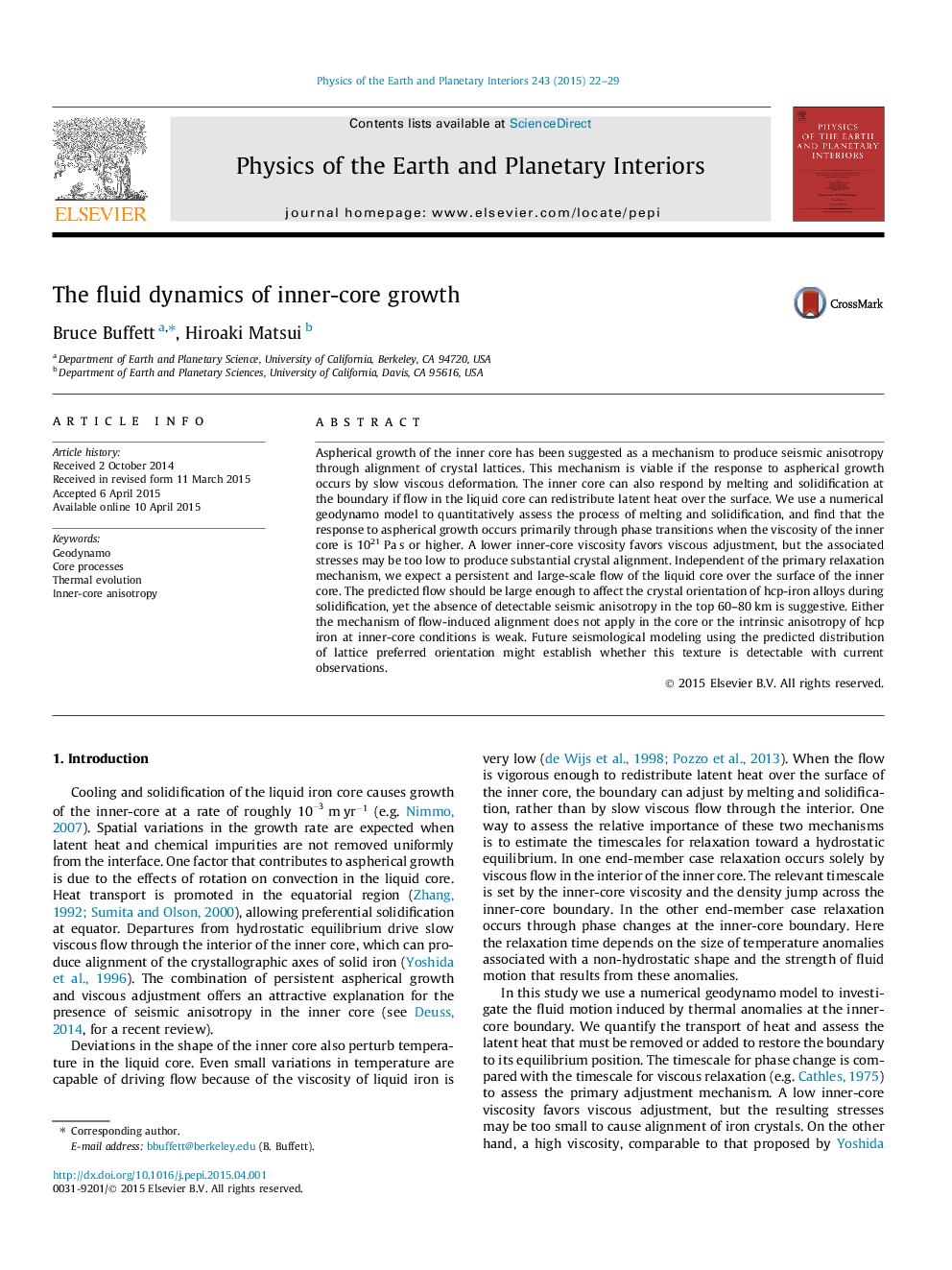| Article ID | Journal | Published Year | Pages | File Type |
|---|---|---|---|---|
| 4741378 | Physics of the Earth and Planetary Interiors | 2015 | 8 Pages |
•Convection in the liquid core causes preferential growth of the inner core.•Topography relaxes by melting and solidification when the inner core viscosity exceeds 1.0E21 Pa s.•Persistent flow over the surface of the inner core should align crystals during solidification.
Aspherical growth of the inner core has been suggested as a mechanism to produce seismic anisotropy through alignment of crystal lattices. This mechanism is viable if the response to aspherical growth occurs by slow viscous deformation. The inner core can also respond by melting and solidification at the boundary if flow in the liquid core can redistribute latent heat over the surface. We use a numerical geodynamo model to quantitatively assess the process of melting and solidification, and find that the response to aspherical growth occurs primarily through phase transitions when the viscosity of the inner core is 1021 Pa s or higher. A lower inner-core viscosity favors viscous adjustment, but the associated stresses may be too low to produce substantial crystal alignment. Independent of the primary relaxation mechanism, we expect a persistent and large-scale flow of the liquid core over the surface of the inner core. The predicted flow should be large enough to affect the crystal orientation of hcp-iron alloys during solidification, yet the absence of detectable seismic anisotropy in the top 60–80 km is suggestive. Either the mechanism of flow-induced alignment does not apply in the core or the intrinsic anisotropy of hcp iron at inner-core conditions is weak. Future seismological modeling using the predicted distribution of lattice preferred orientation might establish whether this texture is detectable with current observations.
